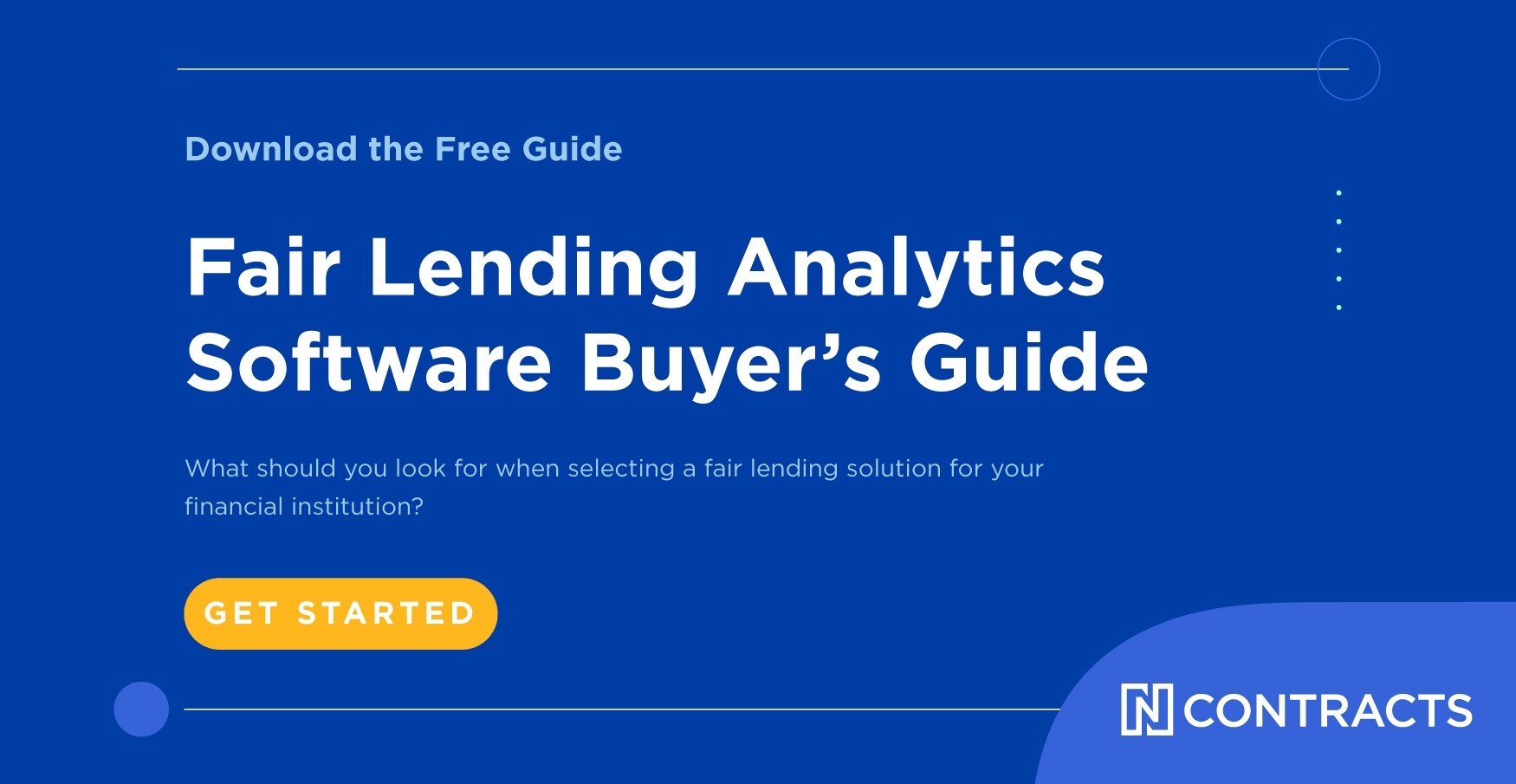Managing fair lending compliance can be tough, but knowing the 9 essential elements of any fair lending compliance management system will make it easier.
Fair lending compliance management is no simple task. Hundreds of pages of regulations, evolving rules and complex nuances mean that managing fair lending compliance could be a full-time job. And yet, for most compliance officers, fair lending is just one piece of the compliance puzzle that they have to manage.
Fortunately, there are a few key elements that every fair lending compliance managment system, or program, needs.
We've identified 9 that apply broadly to banks, credit unions, mortgage companies and auto lenders. Focusing on these 9 areas will provide a strong foundation for your fair lending compliance.
Let’s jump right in:
1. Board & Management Oversight
The Board of Directors and senior management team are essential to effective compliance. Not only do they strengthen your culture of compliance with a strong “tone from the top,” but they also should are held accountable for ensuring that systems are in place to support compliance initiatives. Leadership can even be held accountable for violations, if and when they arise.
2. Fair Lending Risk Assessment
Best practices recommend that institutions complete a fair lending risk assessment every 12-18 months, or sooner if your offerings, business structure or policies change. As your institution grows and develops, your risk exposure will change. An annual risk assessment will provide accurate perspectives on your risk, helping you manage it more effectively.
3. Fair Lending Policies and Procedures
A surprising number of financial institutions do not have a written fair lending policy. In order to be effective, your policy statement needs to be clear and comprehensive, covering all products and phases of operation. Policies should outline both what you will do, and what you won’t do.
Note: Exceptions to policy and practices can create risk, so make sure to explain, document and report any exceptions and monitor for risk exposure.
4. Fair Lending Training
Fair lending training is absolutely essential to a strong compliance program. Consider general, role-specific (for those involved in the credit process) and senior management training. Training should include attendance and comprehension tracking and record-keeping.
5. Independent Review
An independent review, or audit, plays an important role in fair lending compliance management. An independent audit is a deep review of your performance and risk from an impartial third party. They'll offer a clear-eyed perspective on your institution's performance and risk management.
6. Internal Monitoring & Corrective Action (Self-Testing)
When it comes to managing risk, monitoring is an important step because it helps ensure that practices map to policies. Over time, monitoring also helps confirm that controls are effectively minimizing risks. This self-testing may include ongoing data analysis, policy reviews, exception management reviews, and more.
The next step is taking corrective action to reduce risks as they’re identified. Throughout this process, document and share findings and results with the Board and senior management when appropriate.
In the past, the CFPB has said that deficient monitoring is one of the most common weaknesses they see in exams. An undetected risk can grow, and can even lead to repeat offenses.
7. Fair Lending Analysis & Reporting
Fair lending data analysis is an essential aspect of fair lending compliance. fair lending is all about making sure that similarly situated individuals are treated similarly; data analysis helps evaluate whether that is the case by identifying disparities. Regulators will view disparities as red flags for potential discrimination. Disparity does not necessarily mean that discrimination is occuring, but data analysis is the only way to make the distinction.
fair lending analysis should be comprehensive and provide clear insights about red flags that are likely to catch an examiner’s attention. The regulators will start with data analysis, so you should, too.
[Free Report: Fair Lending Denial Disparity Analysis]
8. Complaint Management
A major part of fair lending compliance management, particularly with the CFPB leading the charge, is complaint management. Consumer complaints can attract regulatory attention, sparking scrutiny and even exams.
Complaints should be collected, recorded, investigated and resolved using a clear process. They should also be monitored to identify any common themes. Pay particular attention to complaints that allege discrimination or anything else that may be a fair lending red flag.
9. Third-Party Vendor Management
Financial institutions are responsible for managing third-party relationships and controlling the risk involved. In general, regulators view the actions and policies of a third-party vendor as the actions and policies of the institution being examined. You should have a clear risk management system, including controls, for third-party relationships.
Ncontracts Viewpoint: Your fair lending compliance management system should correlate to your institution's size and complexity. Larger, more complex institutions need more detailed compliance management programs.
If you need help with any aspect of your fair lending compliance management program, get in touch! We'll be glad to discuss your program's strengths and opportunities for improvement.
In the meantime, enjoy this free resource, which will help you rate your fair lending compliance management program in 5 simple questions.
